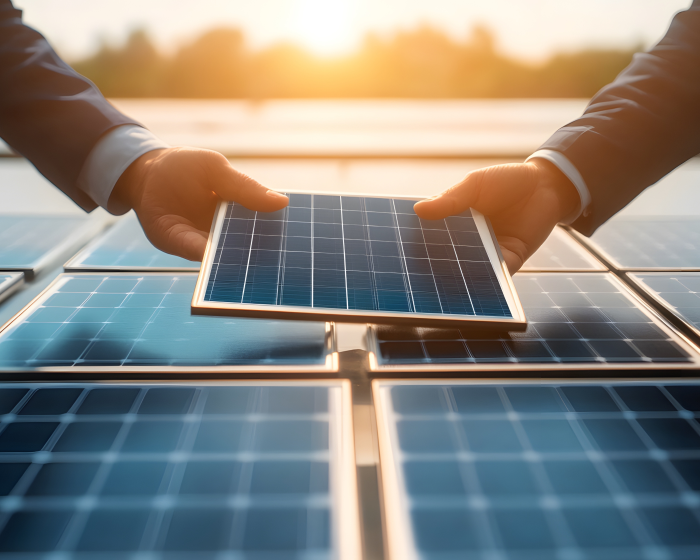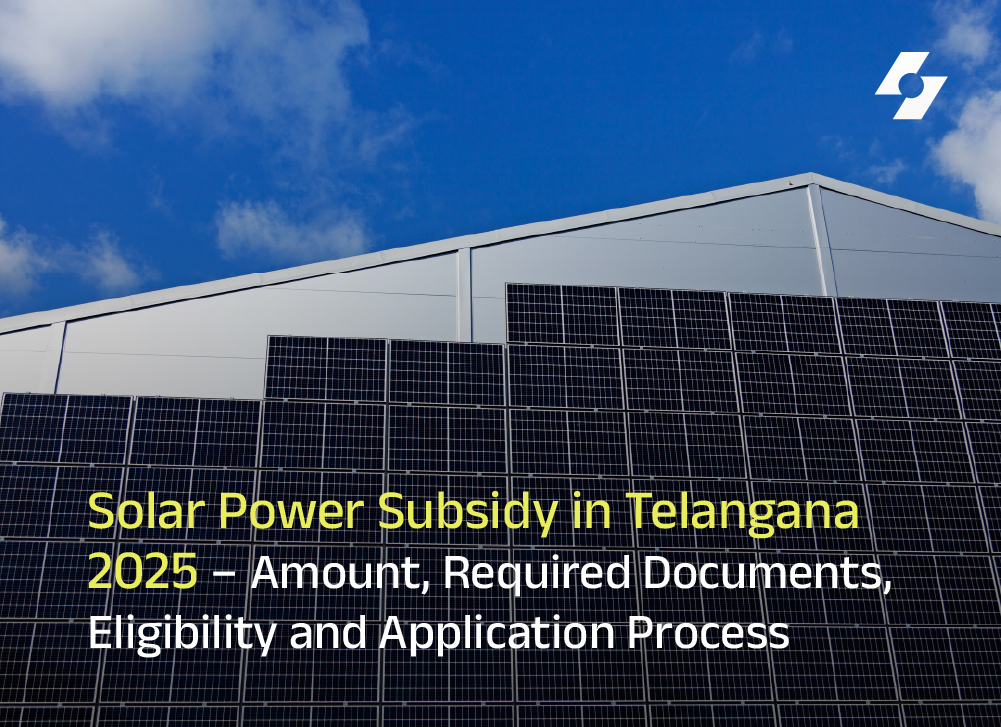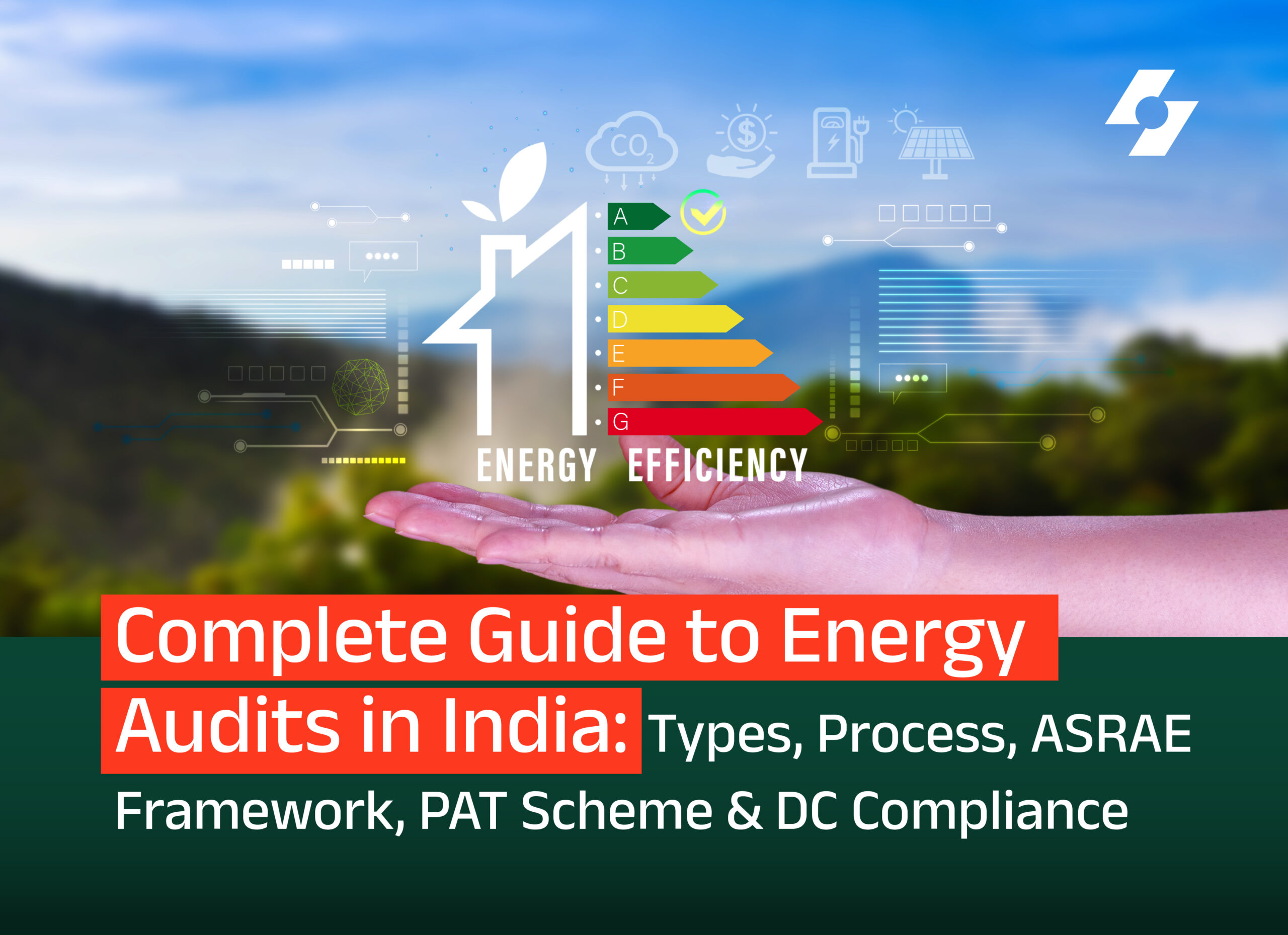Not all Power Purchase Agreements (PPAs) are the same; just like not all solar panels fit every rooftop! A PPA is a special agreement between a power generator or a developer and a power consumer. But did you know there are different types of Power Purchase Agreements, each designed to match different needs?
Some buyers want flexibility, while others prefer a steady price for years. Some PPAs make the Renewable Energy Service Company (RESCO) responsible for everything, while others give more control to the consumer in the agreement. Choosing the right PPA is like picking the best deal for your electricity. It helps you save money, provides reliable power, and supports clean energy.
Whether it is a fixed-price plan, a pay-as-you-go model, or something in between, each type has its own benefits. Let us explore PPAs in detail and find out which one works best!
Understanding Power Purchase Agreements (PPAs)
A Power Purchase Agreement (PPA) is a special contract between an electricity seller and a buyer or consumer. The seller promises to supply electricity, and the buyer agrees to purchase it for a set period. Through the agreement, the seller gets assured sale of the electricity and the buyer gets a steady electricity price without worrying about market fluctuations.
Today, in India, PPAs are a popular tool which are widely used by corporations (industrial and utility) to purchase green power from generators present in the market. By choosing renewable energy (solar, wind etc.) through a PPA, businesses and utilities can fulfill their RPOs, can save money and reduce their carbon footprint at the same time, helping them achieve their decarbonization and net-zero goals efficiently.
There are different types of Power Purchase Agreements depending on how long they last. Long-term PPAs are often used for big projects and can run for over 25 years. Short-term PPAs are more common for small businesses and might last for a few months or years.
Understanding how a PPA works makes it easier to choose the best option to adopt. Whether it is a small rooftop setup, huge solar farm, wind farm or a hybrid power plant, PPAs help make renewable energy more affordable and reliable.
What are the Advantages of PPA?
There are various benefits of PPA for both buyers and sellers:
|
For Buyers
|
For Sellers
|
|
Stable Price
Buyers get electricity at a fixed price for a long time, making it easier to manage costs.
|
Steady Income
Sellers get a guaranteed income, which helps them fund their energy projects.
|
|
Offers Tailored Solutions
It provides flexibility in contract structure, pricing, and energy supply arrangements.
|
Less Risk
Since a buyer is already confirmed, sellers do not have to worry about price changes or finding customers.
|
Types of Power Purchase Agreements
After understanding what a PPA is, let’s see the various types of Power Purchase Agreements are:

In this setup, solar panels are placed on a company’s roof or parking area. The company uses electricity made there, saving money and using clean energy. The seller installs and takes care of the panels, so the consumer doesn’t need to maintain the asset. In this type of PPA, the developer (the seller) takes care of the installation and maintenance of the solar equipment.
There are legal agreements which cover where the panels go, who maintains them, and safety rules. Thus, it is best for companies looking to use clean energy without large upfront costs.

In off-site PPA a business agrees to buy electricity from a renewable energy project located elsewhere, such as a large solar or wind farm. The power is sent through the existing grid to the company’s facilities. This option suits businesses that cannot install renewable systems on their sites but still want to support green energy.
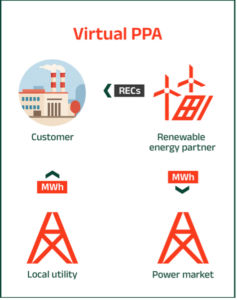
A VPPA is a financial agreement where a business supports a renewable energy project by agreeing to a fixed price for its electricity but does not receive the physical power. Instead, the electricity is sold into the grid, and the business (RECs) showing they have helped produce clean energy. This certificate proves that electricity was made using clean energy. This helps companies meet sustainability goals without changing their existing power supply.
Read here to know more about Renewable Energy Certificates (RECs): All You Need to Know.
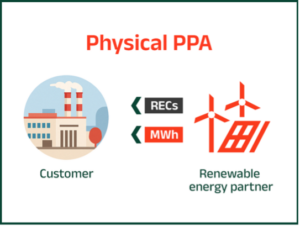
In this type of Power Purchase Agreement, the business receives the actual electricity produced by a renewable energy project. The power is delivered directly to the company’s facilities, often through a special arrangement with the local utility. This ensures the business uses the green energy it has agreed to purchase.
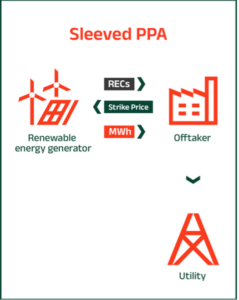
A Sleeved PPA involves a third party, usually an energy company, that helps transfer electricity from a renewable energy producer to the business. The third party manages the delivery and handles any complexities, making it easier for the business to use renewable energy without dealing with the technical details.
This agreement allows a business to buy electricity from multiple renewable energy projects rather than just one. By sourcing from a variety of projects, the company can reduce the risks associated with depending on a single energy source and support a broader range of renewable initiatives.
In a Block Delivery PPA, a business purchases set amounts of electricity (blocks) during specific times, rather than a continuous supply. This type of Power Purchase Agreement is useful for companies with predictable energy needs during specific periods, allowing them to manage costs effectively by buying energy when it is most needed.
Choosing the right Power Purchase Agreement depends on a company’s specific energy needs, financial goals, and commitment to sustainability. Each type offers different benefits, so businesses should consider their unique situations when selecting the best option.
Read
Green Tariffs - An Alternative to Renewable Energy PPA
Green Tariffs are programs offered by utility companies that allow businesses to buy renewable energy directly from the utility’s available green energy sources. This provides an easy way for companies to support renewable energy without entering into a separate PPA with an energy producer.
It lets customers support renewable energy by buying certificates, without directly using green electricity.
This allows customers to purchase renewable electricity from specific projects through their utility provider.
What are the Essential Components of PPA?
Understanding the meaning of a PPA before signing a contract is important. A PPA includes key details that help buyers and sellers manage solar energy deals smoothly.
This part of the agreement explains how the electricity price will be set. Some types of Power Purchase Agreements offer fixed prices, while others allow prices to increase over time or follow market rates.
PPAs usually last 10 to 20 years or more. The contract states whether it can be renewed or extended.
PPAs define how risks are divided between the buyer and the seller. These may include changes in electricity prices or government rules.
What is the Role of PPA in the Energy Sector?
Collectively, all types of Power Purchase Agreements play a big role in making the energy sector more reliable and affordable.
PPAs guarantee that buyers get a continuous supply of electricity. This is important for companies and factories that need power to keep their work running without interruptions.
A PPA locks in electricity prices for a set period, protecting buyers from sudden price changes. This helps businesses plan their expenses without worrying about rising energy costs.
- Supporting Renewable Energy Growth
PPAs encourage investment in solar and other renewable energy projects by ensuring that the electricity they produce has buyers. This makes clean energy projects more successful.
How to Choose the Right PPA for Your Needs?
Choosing the right one from different types of Power Purchase Agreements for your business is essential to ensure a steady supply of electricity and manage costs effectively. Things you need to consider before choosing the best PPA for your needs are:
- Understand Your Energy Needs
- Assess Consumption: Determine how much electricity your business uses daily, monthly, and yearly.
- Peak Usage Times: Identify when your energy use is highest to ensure the PPA covers these periods.
- Evaluate Pricing Structures
- Fixed Price: Pay the same rate for electricity throughout the contract.
- Variable Price: Rates change based on market conditions.
- Escalating Price: Prices increase at agreed intervals.
- Consider Contract Length
- Short-Term: Offers flexibility but may come with higher rates.
- Long-Term: Provides price stability over many years.
- Assess the Provider’s Reputation
- Experience: Choose providers with a proven track record in the energy sector.
- Financial Stability: Ensure they can fulfil long-term commitments.
- Review Legal and Regulatory Compliance
- Local Laws: Ensure the PPA aligns with regional energy regulations.
- Permits and Approvals: Confirm that all necessary permissions are in place.
How Sunsure Energy Can Help?
Sunsure Energy helps businesses in India switch to clean energy through Power Purchase Agreements. We offer long-term contracts where companies can buy electricity from renewable sources like solar and wind.
This means your business gets steady, green power without needing to set up your own energy systems. We manage everything, making it easy for your company to reduce their carbon footprint and support a sustainable future.
With a pipeline of 10 GW by 2028, we are dedicated to powering India’s green energy movement.
Final Thoughts
PPAs help your business get clean energy smartly and cost-effectively. Choosing the right type of Power Purchase Agreement ensures stable electricity, saves money, and supports a greener future.
Whether your company wants on-site power, off-site supply, or financial benefits from renewable energy, there is a type of PPA to match different needs. By making the right choice, you can reduce your carbon footprint while securing a reliable power source for the future.

